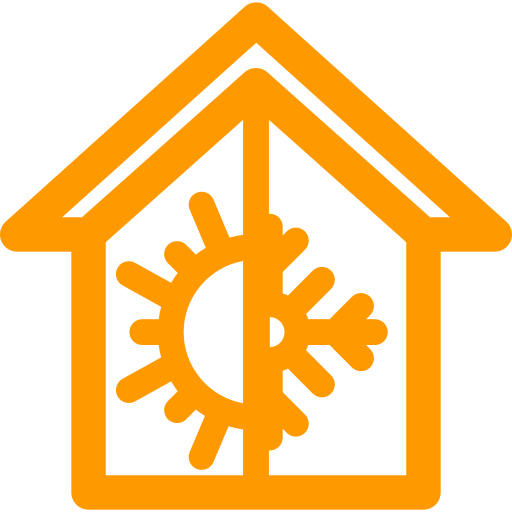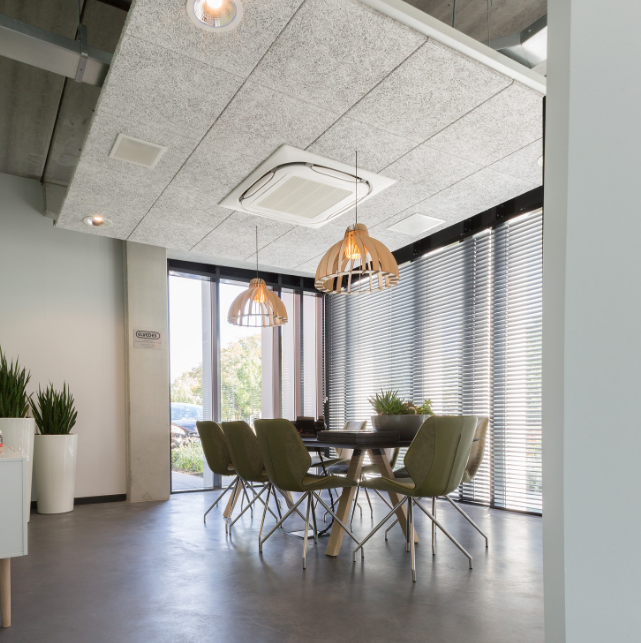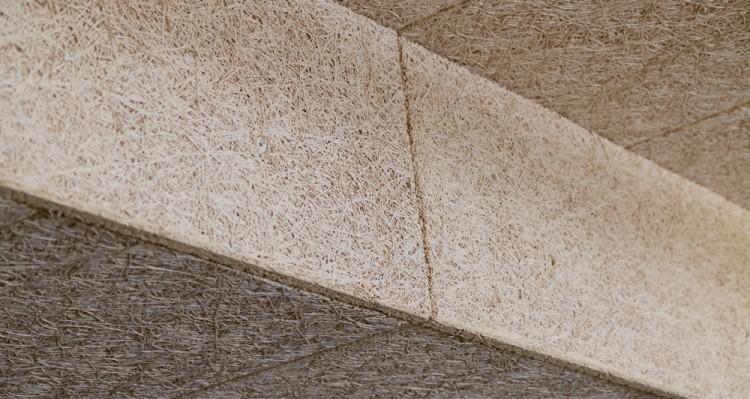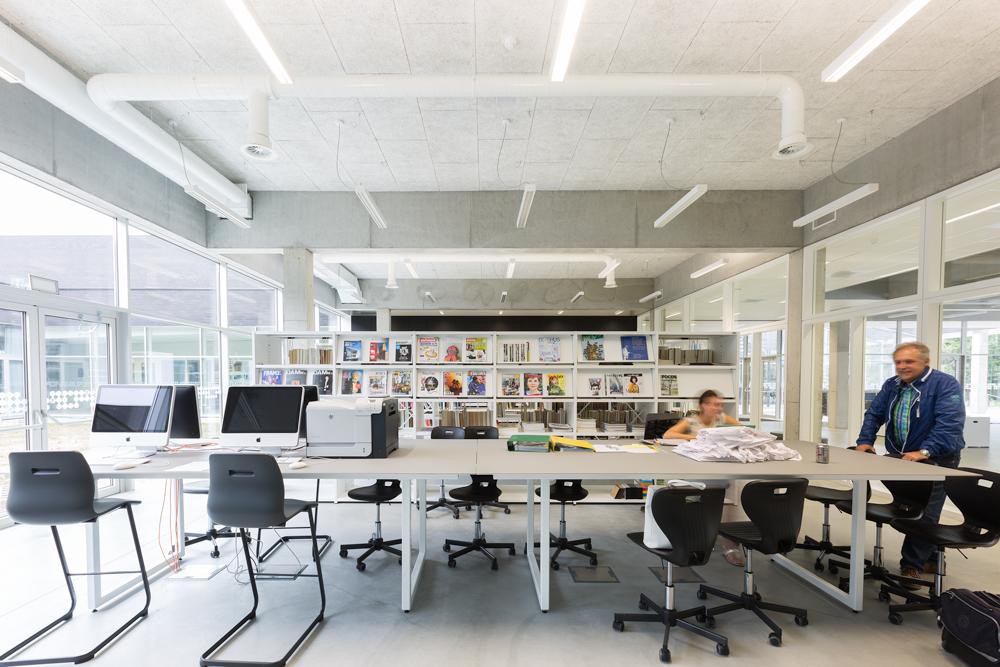Stertekt, akoestische thermische oplossingen



Stertekt’s grote verscheidenheid aan producten biedt architecten, aannemers, afbouwers en adviseurs grote vrijheid om:
een uitstekende akoestiek,
een hoge thermische isolatie én
een duurzaam binnenklimaat te creëren
Met een grote diversiteit in kleuren, structuren en patronen zijn de ontwerpmogelijkheden ontelbaar.

Uitstekende akoestiek
Een goede akoestiek is belangrijk voor het gevoel van welzijn in huis, op het werk, op school, in het zwembad, de bioscoop of het theater. Stertekt akoestische panelen helpen enorm bij het verminderen van ruis en lawaai. Onze producten zijn officieel getest en hebben uitstekende tot perfecte akoestische eigenschappen. Lees hier meer over akoestiek, absorptiewaarden en nagalmtijd.
De productspecialisten van Stertekt maken graag een vrijblijvende akoestische berekening voor uw ruimte of project. Door in een vroeg stadium over de akoestiek na te denken, kunnen veel faalkosten worden voorkomen. Ook voor bestaande situaties die in de praktijk niet voldoen aan de eisen, kunnen we akoestische berekeningen maken en u voorzien van een passend advies. U krijgt een rapport met daarin de nagalmtijd en de galmreductie per Hz.
Meer informatie of akoestische berekening nodig?
Optimaal thermisch comfort
Dat isolatie goed is voor ons welbehagen én voor de energierekening is geen verrassing meer. Stertekt thermische panelen helpen u bij het verminderen van koude bruggen en het verlagen van het energieverbruik. Onze producten zijn uitvoerig getest en hebben uitstekende thermische eigenschappen. Lees hier meer over warmte isolatie, Rd en Rc waarden (en ISSO).
De productspecialisten van Stertekt maken graag een vrijblijvende thermische berekening voor uw ruimte of project. Door in een vroeg stadium over de thermische isolatie na te denken, kunnen veel kosten worden voorkomen. Ook voor bestaande situaties die in de praktijk niet voldoen aan de (nieuwe) eisen, kunnen we thermische berekeningen maken en u voorzien van een passend advies. U krijgt een rapport met daarin de R-waarde van alle constructie onderdelen en de Rc waarde van de totale constructie.
Meer informatie of thermische berekening nodig?
Brandveilige en stabiele oplossingen
De brandeigenschappen van plafonds en wanden hebben een grote invloed op hoe een brand zich ontwikkelt. Om de brandveiligheid in uw pand of project te garanderen is het van groot belang dat u gebruik maakt van hoogwaardig, brandwerend materiaal. Stertekt houtwolcementpanelen zijn hiervoor een uitstekende oplossing.
Elke houtvezel in onze akoestische en thermische panelen zijn ingekapseld en beschermd door onbrandbaar cement. Hierdoor hebben alle Stertekt panelen standaard brandklasse B en een aantal panelen zelfs brandklasse A2. Stertekt panelen zijn nagenoeg onbrandbaar, ze laten slechts lichte warmte en nauwelijks rook vrij.
Daarnaast zijn meerdere Stertekt producten geschikt voor Brandstabiele montage constructies volgens NBN 713.020 of EI30. Dit garandeert dat de plafonds stabiel genoeg zijn voor gebouw gebruikers om het pand te verlaten en hulpdiensten de tijd te geven hun werk te doen.
Wilt u hulp bij het kiezen van de oplossing en de brandveilige montage methode voor uw project? Schroom niet het onze productspecialisten te vragen. Ze helpen u graag van uw project een succes te maken.
Projecten waar we trots op zijn…
Beaufort toren Kerckenbosch
Pal aan de rand van de adembenemende Utrechtse Heuvelrug staa…
Provinciale Kunsthumaniora
De Provinciale Kunsthumaniora Hasselt (PIKOH) kende de laatste jaren een stijgend leerlingenaantal en breidde het …
Hoofdkantoor Campgemini Leidsche Rijn
Een open en gastvrije ontmoetingsplek met goede akoestiek - Leidende principes bij de ontwikkeling van het kantoor zijn toepassing van het nieuwe w…
Virga Jesse College
Het Virga-Jessecollege is zichtbaar aanwezig aan de Hasseltse binnenring. De neogotische architectuur vertaalde de …
Meer weten?
Heeft u hulp nodig bij het maken van de juiste keuze Stertekt akoestisch paneel of Stertekt combipaneel voor uw project? Of wilt u meer weten over de juiste verwerking of montage van Stertekt houtwolcementplaten? Onze productspecialisten helpen u graag verder.